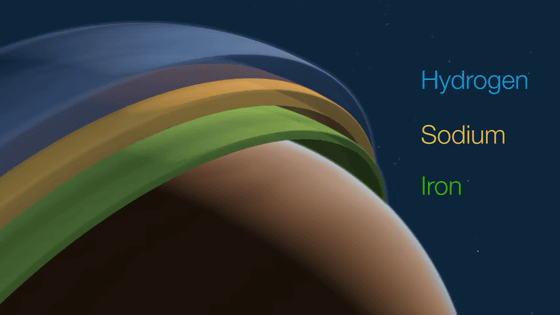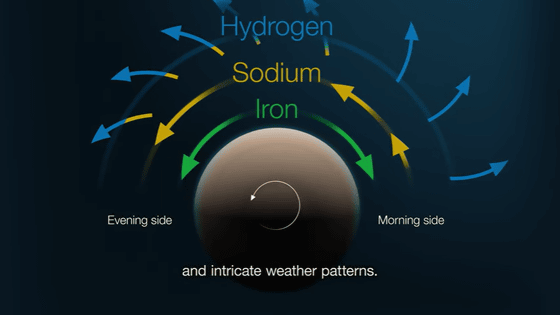Amazing atmospheric structure observed on exoplanet where rubies and sapphires rain

By
The exoplanet ' WASP-121b ,' located about 880 light years away from Earth, is known as a sci-fi planet, with a shape closer to a rugby ball rather than a sphere, and the possibility of an environment with 'metallic clouds floating and rubies and sapphires raining down.' When astronomers conducted observations to analyze the atmospheric structure of WASP-121b, they discovered an atmospheric structure that shook the conventional understanding of how weather works on planets.
Vertical structure of an exoplanet's atmospheric jet stream | Nature
https://www.nature.com/articles/s41586-025-08664-1
Scientists just looked inside a truly sci-fi planet | Mashable
https://mashable.com/article/planet-extreme-weather-first-3d-view-of-atmosphere-wasp-121b

WASP-121b is an exoplanet orbiting WASP-121 , which is said to have a mass and radius 1.4 times that of the Sun. WASP-121b is a Jupiter-like gas giant planet, with a mass 1.157 times that of Jupiter and a radius 1.753 times that of Jupiter, making it a fairly large planet.
WASP-121b orbits WASP-121 like the Earth's Moon, and the daytime hemisphere, which always faces the star, is hot, exceeding 3000 degrees, while the nighttime hemisphere, which always faces away from the star, is hot at around 1500 degrees. As a result, unlike Earth, water clouds do not form, but metal clouds such as iron and magnesium form. Past research has shown that oxygen in the atmosphere may condense with metals and rain down as gemstones such as rubies and sapphires, and a number of strange observations have been reported about WASP-121b.
A giant planet 880 light years away was a star showering liquid rubies and sapphires - GIGAZINE

To further analyze WASP-121b's atmosphere, Julia Victoria Seidel, a researcher at the European Southern Observatory , and her colleagues used a composite light from four telescopes to observe the three-dimensional structure and circulation patterns of WASP-121b's atmosphere.
As a result, it was found that WASP-121b's atmosphere is divided into three layers, as shown in the image below. From the top, WASP-121b's atmospheric layers are 'hydrogen wind,' 'sodium jet stream,' and 'iron air,' and according to Seidel, an atmospheric structure similar to that of WASP-121b has never been seen on any planet before.

In particular, the sodium jet stream in the middle is so powerful that it flows faster than the planet's rotation. The jet stream, which blows from the hot 3,000°C daytime hemisphere to the colder 1,500°C nighttime hemisphere, churns up the atmosphere and creates storms more powerful than any seen in the solar system, Seidel explains.

'The atmosphere of WASP-121b behaves in a way that shakes up our understanding of how weather works not only on Earth but on all planets. It's like something out of science fiction,' said Seidel. In addition, astrophysicist Viviana Prinos, co-author of the paper, said, 'It's really amazing that we can study the details of the chemical composition and weather patterns of such a distant planet,' emphasizing that the results of this research will be useful when larger telescopes are designed in the future.
Related Posts:
in Science, Posted by log1e_dh






